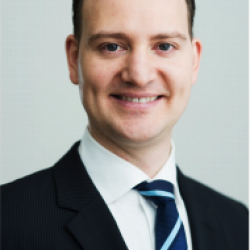
In this talk I will discuss my team’s latest research combining device physics with computer engineering and show intersections with information theory. We are inspired to find answers to both fundamental and technological questions in the fields of optoelectronics, computing, information science. Here, our vision is to execute a mathematical algorithm or a compute-instruction by flowing light through a reconfigurable system where data enters and information exits. As an example, we designed a temporal FFT capable of handling terabits-per-second of data at a fraction of the energy of GPUs. Furthermore, we are interested exploring novel hardware compute-engines from first principles beyond von-Neumann architectures; for instance, our research in the field of neuromorphic computing uses electrooptic nonlinearity as an activation function enabling vector matrix multiplications at the speed of light in neural networks with applications in deep-learning, nonlinear optimization, and image pre-processing. Furthermore, using the coincidence detection property of a leaky-integrate-and-fire neuromorphic network, I will share our latest results in revealing the symmetry of an image – a property key for human 3D vision and even argued to be a signature for intelligence. Beyond cognitive networks, we are intrigued by reconfigurable photonic accelerators for PDE solvers using one-shot execution parallelism such as in residue number-system arithmetic. Lastly, we are interested in finding revolutionary ways to solve NP-complete ‘hard’ decision problems, whose exponentially exponential time complexity functions could be dramatically reduced by implementing graph theory problems using nanoscale building blocks. Particular topics discussed in this talk include a) fundamental scaling laws for optoelectronics, b) demonstrations of the first 100aJ/bit efficient and 60GHz-fast modulators, c) quantum tunnel light sources, e) photonic routers enabling RNS compute engines, f) photonic FFTs and NP-complete oracles, and g) neuromorphic photonic computing.
vrendon@ucsd.edu
858-822-6939
